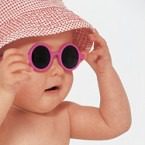 Did you know that one blistering sunburn in childhood or adolescence more than doubles your child’s risk of developing melanoma later in life? The risk of melanoma also doubles if you have five or more sunburns at any age.
Did you know that one blistering sunburn in childhood or adolescence more than doubles your child’s risk of developing melanoma later in life? The risk of melanoma also doubles if you have five or more sunburns at any age.
Thankfully, we don’t encounter many blistering sunburns in our practice, but we see far more sunburns than we’d like to, especially as the intensity of the sun and level of outdoor activities spike in the summer.
Although skin cancer is not something pediatricians routinely screen for in childhood because it typically doesn’t show up until adulthood, we at Weiss Pediatric Care are disturbed by studies showing that the incidence of childhood melanoma is rising.
Some risk factors associated with melanoma cannot be changed, such as a family history, having fair skin/hair and having a large number of sizable moles or freckles on the body.
But there are several preventive measures you can take to reduce your risk of skin cancer.
Top on our list: Simply, do not burn.
Here are a few other tips to enjoy a safer summer:
• Young skin may heal faster than old skin, but it also is less able to protect itself from injury, including the sun. Babies under six months of age should never be exposed to the sun. Those older than six months should wear light-colored clothing, a hat with a brim and UV-blocking sunglasses to protect their eyes.
• Avoid the sun and stay indoors or in the shade 10 am-4 pm, when the sun’s rays are strongest.
• Use sunscreen that provides UVB and UVA protection with a sun protection factor (SPF) of at least 30. Apply 15-30 minutes before sun exposure and 30 minutes after exposure begins, then reapply at least every two hours, or more frequently if kids have been swimming or sweating.
We realize it’s not always easy to prevent a sunburn – it can happen in as little as 15 minutes of being in the sun, and unfortunately, the redness and discomfort may not be noticed for a few hours. If you notice your child getting burned, remove him or her from the sun right away. In most case, sunburns can be managed at home with a few care and comfort measures, including:
• Apply cool compresses and moisturizing creams or aloe gel as needed to provide comfort, or draw them a cool (not cold) bath.
• Give extra fluids for the next 2 to 3 days, and ibuprofen or acetaminophen, as directed and if needed, for pain.
• If they go outside, cover all sunburned areas fully until healed.
Be sure to watch for signs of dehydration (headache, confusion, feeling faint) and seek medical care right away if your child’s sunburn forms blisters, causes swelling in the face, or if he or she experiences fever or chills after getting burned.
For more tips on keeping your family safe this summer, follow these tips from the American Academy of Pediatrics.
